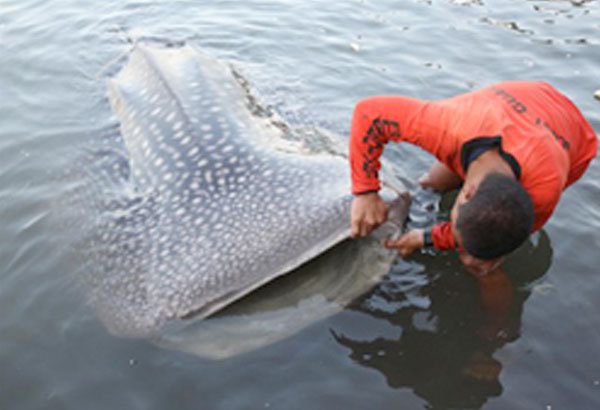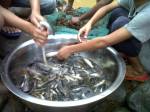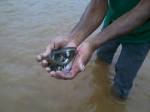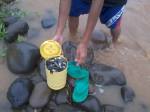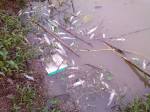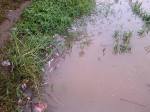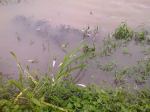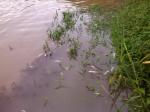By Anjo Bacarisas, 14th January 2014;
Ammonium nitrite was found in the three water samplings that the Regional Health Fish Laboratory of the Bureau of Fisheries and Aquatic Resources (BFAR) in Northern Mindanao conducted on Monday after a fish kill occurred in the river of Barangay Agusan on January 11.
Rey Hojas, lab analyst of BFAR, said the river water contained high amounts of ammonium nitrite.
He added that the chemicals can bring stress to the fishes, and that could have caused the fish kill.
“It is possible that the ammonium nitrite came from agricultural runoff,” said Hojas.
He elaborated that the ammonium nitrite possibly came from pesticides and fertilizers in the hinterlands, due to the rain water flushing these chemicals into the river.
Hojas said the murky water could also have contributed to the fish kill.
Hojas said any fish in the contaminated water should not be eaten.
Agusan village chief Andrew Melizza said some residents reported fish kills in the hinterland communities in the barangay.
“In the hinterland communities like Balubal, fish kills occurred,” said Melizza.
The river in Barangay Agusan flows from Mount Kitanglad along the Agusan Canyon, Barangays Dahilayan and Camp Philips in Manolo Fortich, Bukidnon.
Edwin Dael, city local environment and natural resources office (Clenro) chief, said that a town in Bukidnon province, banana plantations, pineapple plantations, and pig and poultry farms are operating in the hinterland areas.
Meanwhile, Celestino Rullan, a veterinarian who used to work in the Department of Agriculture for 29 years, said the investigation regarding the causes should also include the animals around the river.
He added that pesticide analytical methods should be conducted to identify the exact chemicals that brought the onslaught to aquatic life in the river.
Rullan’s residence is just along the river in Barangay Agusan.
Worst fish kill
Hojas said the residents reported that around 175 kilograms of fish of different varieties were gathered during the fish kill.
However, Dael claimed tons of fish were found lifeless when some of the Clenro staff arrived in the area after receiving the report from Melizza.
“This is the worst fish kill recorded in the history of the river in Barangay Agusan,” Dael said.
He added the deaths of fishes lasted up to two days.
At press time, Melizza, said fishes in the river are still dying.
Livelihood
“Money is not enough to pay for the damage caused in our river,” said Melizza.
Dael added it would take two years or more before connecting rivers can supply aquatic life to the river in Barangay Agusan.
He added a certain type of shrimp that releases its offspring in the mouth of the river could now be gone after the fish kill.
“The chain of offspring was cut off due to the phenomenon,” said Dael.
Pigok (Tapiroid Grunter) (Mesopristes cancellatus), an endangered variety of fish that can only be found in Mindanao, did not escape the onslaught of the contaminated water in the river.
Melizza added a lot of people are relying on the river for livelihood and they are the ones who are gravely affected by it.
Probe deeply
Dael vowed his office would further investigate the fish kill.
“This phenomenon happened on a periodic basis before, but no concrete solutions were made,” said Dael.
He furthered that a committee would be established to investigate and come up with conclusive evidence to cease the periodic fish kill.
Considering the massive amount of dead fish, Dael said that aside from nitrite ammonia, it is possible that other substances could have been involved.
In Barangay Tablon, a village adjacent to Barangay Agusan, some 10 to 15 kilograms of small fish of different varieties were found floating lifelessly just meters away from the shoreline in December last year. The fish kill took place near an oil company.
Melizza added that the same phenomenon happened in the river in the long past.


